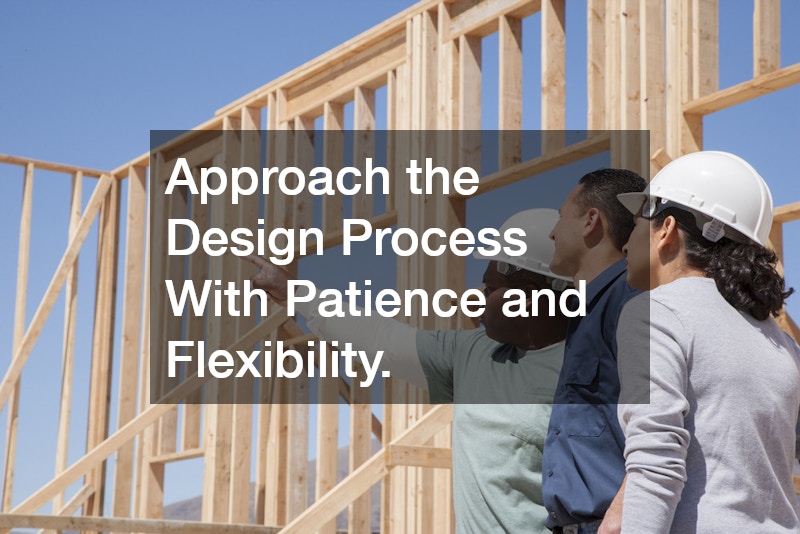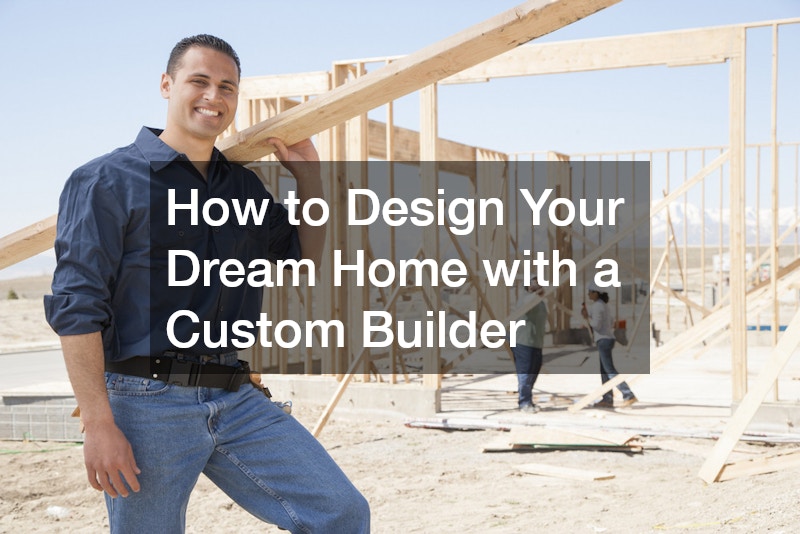Defining Your Vision for Your Custom Home
Designing your dream home is one of the most exciting and rewarding experiences in a person’s life. It gives you the chance to create a space that reflects your lifestyle, personal style, and long-term needs. Working with a custom home builder makes this journey more manageable, more creative, and far more successful. Instead of settling for a predesigned floor plan or compromising on features, you can collaborate with a professional who understands how to turn your ideas into a functional, beautiful, and lasting home.
From early planning to final finishes, here is how to design your dream home with a custom home builder.
One of the first and most important steps is defining your vision. Before meeting with a builder, spend time thinking about how you want your home to feel and function. Consider what you like and dislike about your current home, how many bedrooms and bathrooms you need, and what kind of layout will support your lifestyle. Do you want open-concept living spaces? A dedicated home office? A large kitchen for family gatherings? Creating a list of must-have features helps you communicate your priorities clearly. Your builder will use this information to form the foundation of your design plan.
Choosing the Right Lot and Location
Next, consider the location and lot where your home will be built. The site influences everything from the home’s layout to its lighting and energy efficiency. Factors like slope, soil quality, neighborhood guidelines, and natural views can all shape the final design. A custom home builder can walk the property with you to identify opportunities and potential challenges. Understanding these elements early on helps prevent obstacles and keeps the project on track. Whether you want a quiet wooded lot, a property with scenic views, or a spacious suburban setting, choosing the right site ensures the home fits seamlessly into its surroundings.
Developing a Functional Floor Plan
After choosing your lot, it’s time to develop a floor plan that reflects your needs and preferences. This stage is where creativity really comes to life. Your builder and architectural team will help you explore various layouts, room configurations, and flow patterns. For example, some families prefer bedrooms grouped together, while others want separation between living and sleeping spaces. You may want an expansive primary suite, a large walk-in pantry, or a finished basement for entertainment. The beauty of working with a custom home builder is that each decision can be made with your lifestyle in mind. As you review drafts and make adjustments, you gradually refine a layout that feels both practical and personal.
Selecting Materials and Finishes
Another important aspect of designing your dream home is choosing the materials and finishes. These elements bring personality to your home and influence durability, comfort, and long-term maintenance. Your builder will guide you through selecting flooring, cabinetry, countertops, fixtures, lighting, and exterior materials. They can recommend options that match your style while also fitting your budget. Whether you love a modern aesthetic with clean lines and neutral tones or a more traditional look with warm colors and classic details, collaborating with a builder helps you make choices that create a cohesive, polished design. This stage is also where careful planning can help avoid costly upgrades later on.
Designing for Functionality and Daily Living
Functionality is just as important as visual appeal. As you design your home, think about your daily routines and how your space can support them. For instance, consider storage solutions like mudrooms, built-in shelving, and walk-in closets. Think about the proximity of key areas, such as the kitchen’s distance from the garage or the laundry room’s location relative to bedrooms. Proper planning makes your home more efficient and comfortable for years to come. A custom home builder can offer suggestions based on experience, helping you think through details you may not have considered.
Incorporating Energy Efficiency and Sustainability
Energy efficiency and sustainability should also play a role in your design process. Today’s custom homes can incorporate features such as high-performance windows, upgraded insulation, energy-efficient appliances, and solar-ready roofing. These enhancements not only reduce your environmental footprint but also lower monthly utility costs. Your builder can explain which systems and materials offer the best long-term value. Sustainable design doesn’t require sacrificing style; it simply adds another layer of thoughtfulness to your home.
Communicating Throughout the Building Process
Throughout the entire building process, communication is key. Regular meetings with your custom home builder help keep the project aligned with your expectations. You will review plans, timelines, and updates at each phase, making sure the final product reflects your vision. Builders also coordinate with subcontractors, suppliers, and inspectors to keep construction running smoothly. This partnership helps you stay informed without becoming overwhelmed by the many moving parts involved in home construction.
Remaining Patient and Flexible During the Journey
Finally, approach the design process with patience and flexibility. Custom homes require time, collaboration, and thoughtful decision-making. While the journey may feel lengthy at times, the result is a home tailored exactly to your needs—something truly unique and deeply meaningful. By working closely with a skilled custom home builder, you gain the expertise, creativity, and support necessary to bring your dream home to life.

